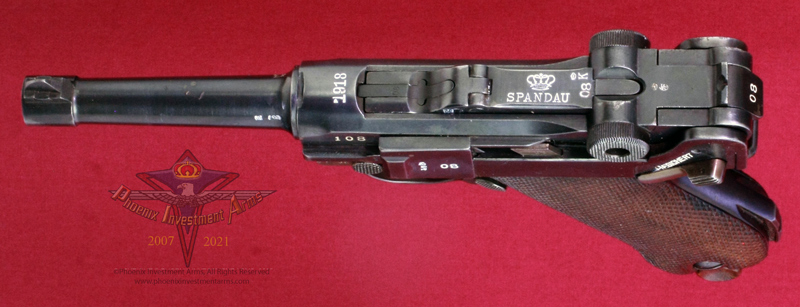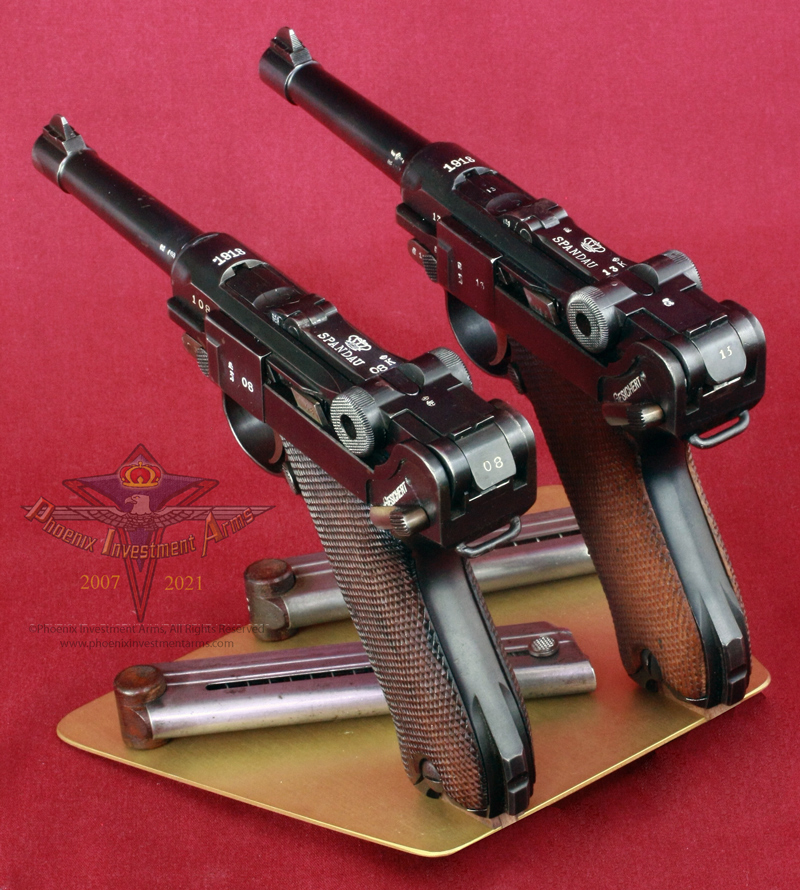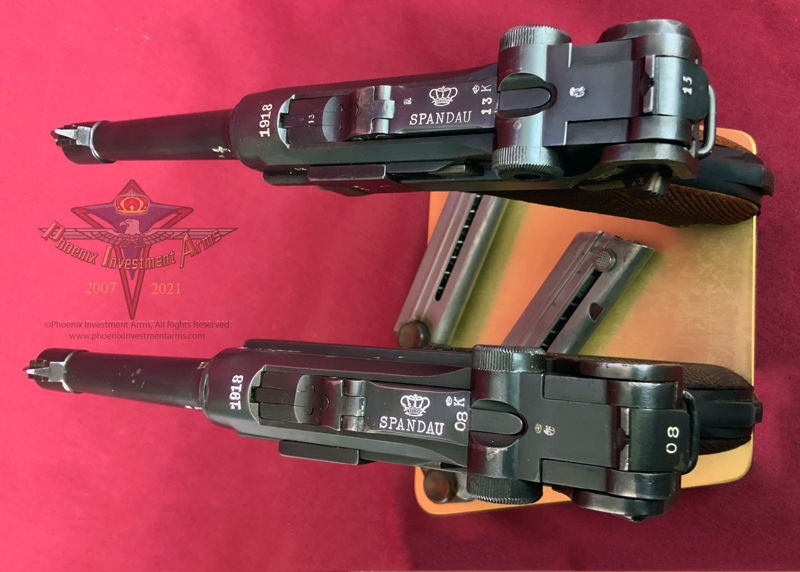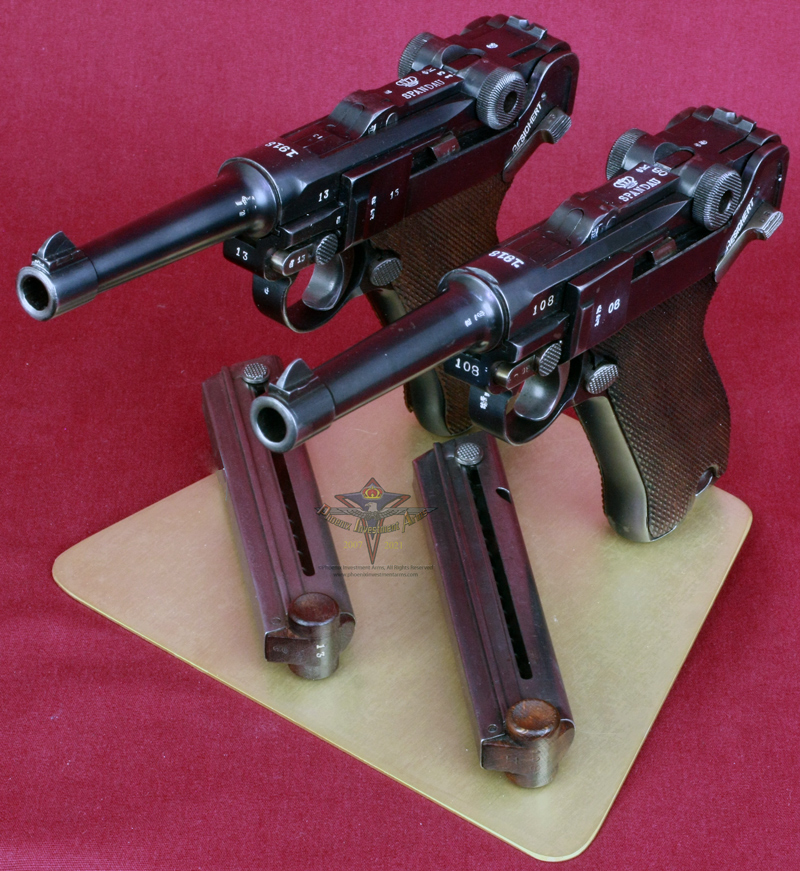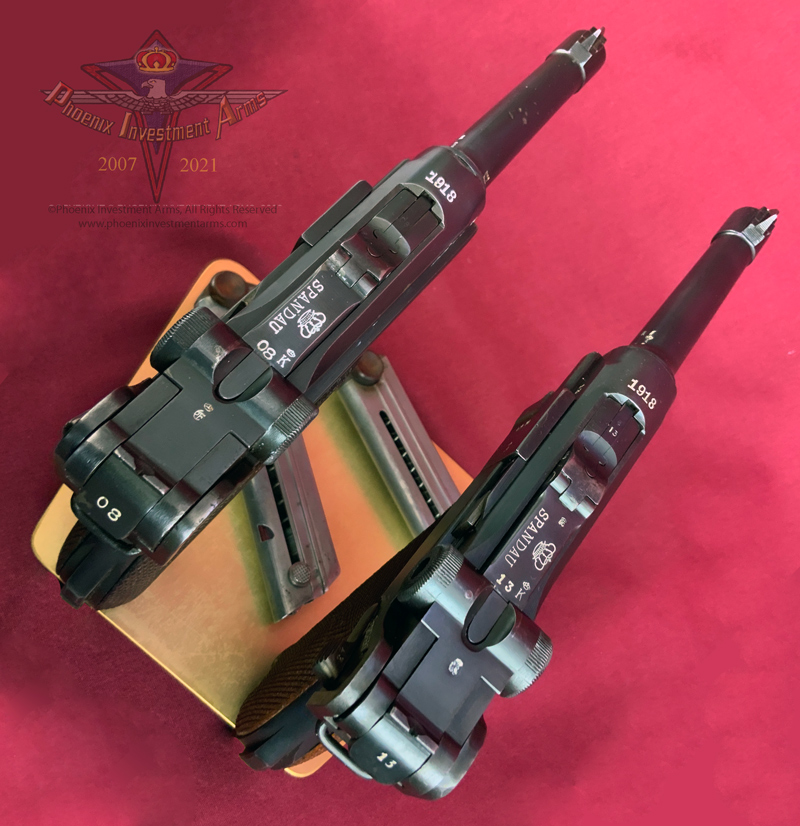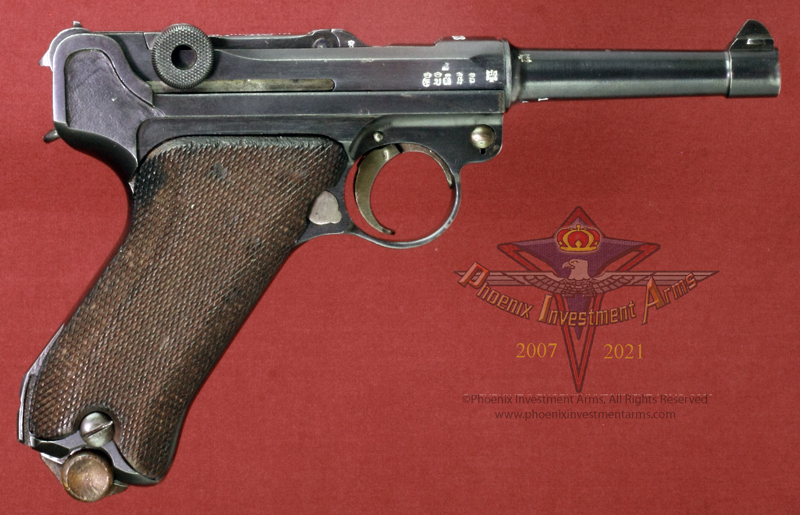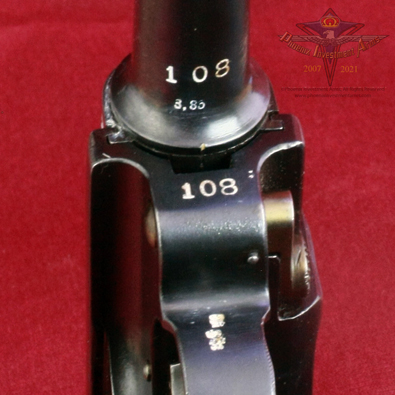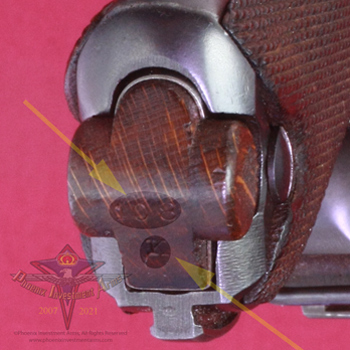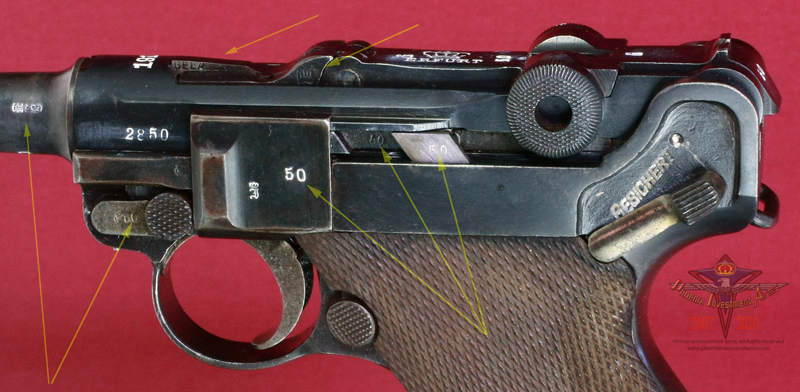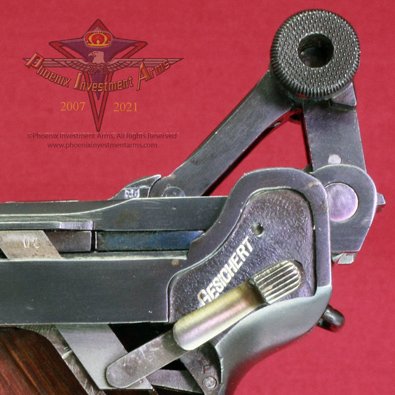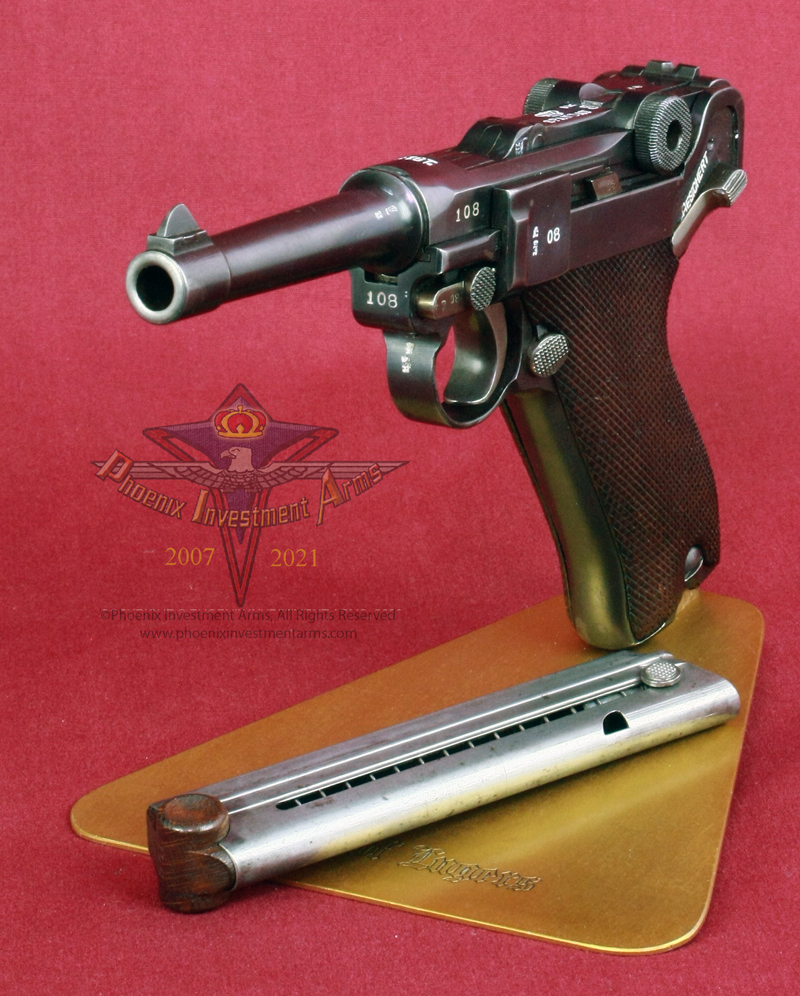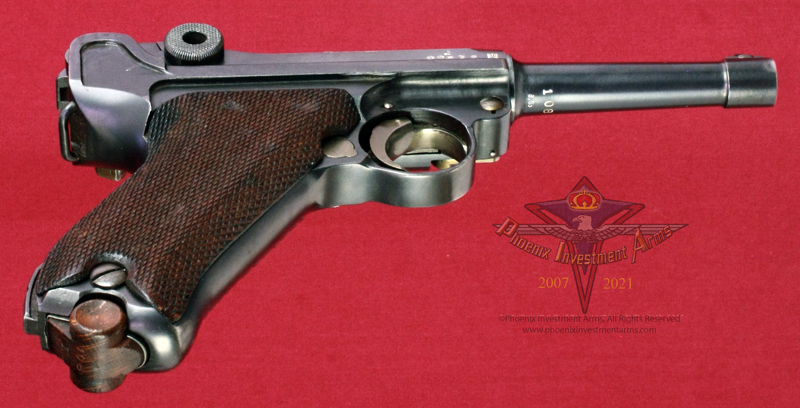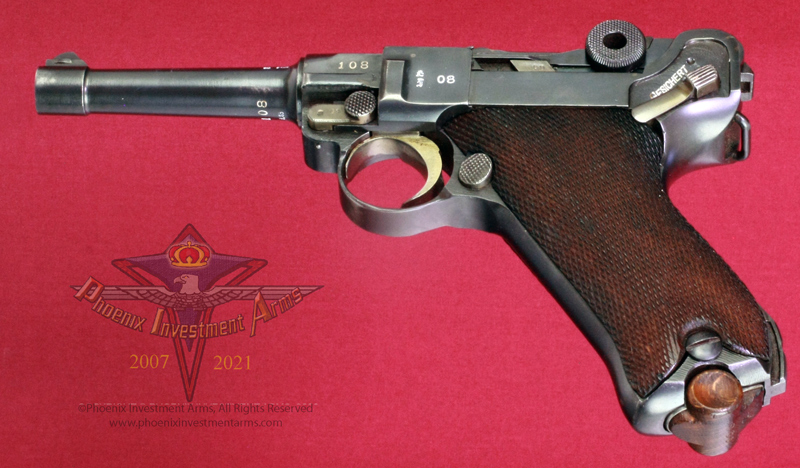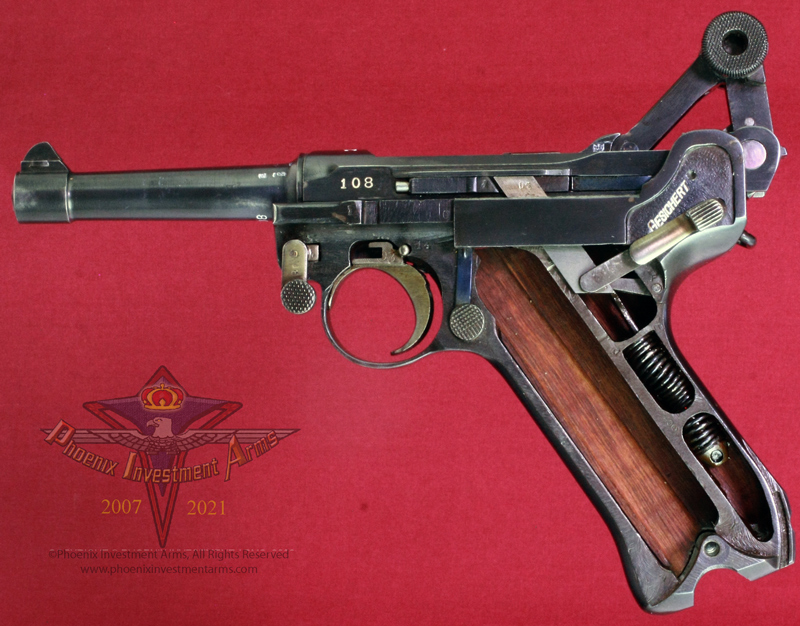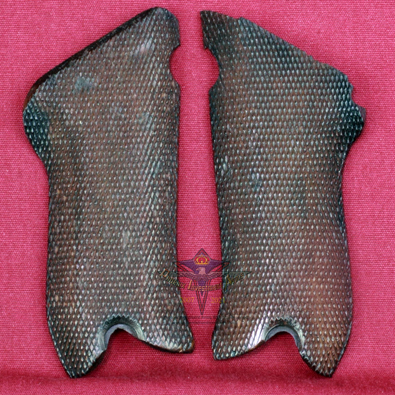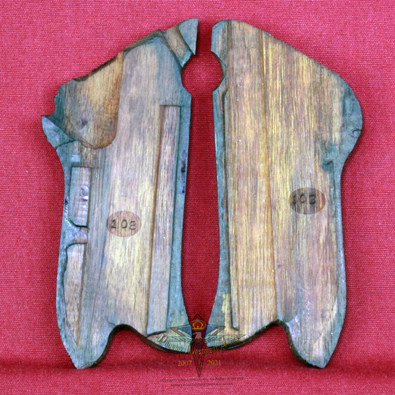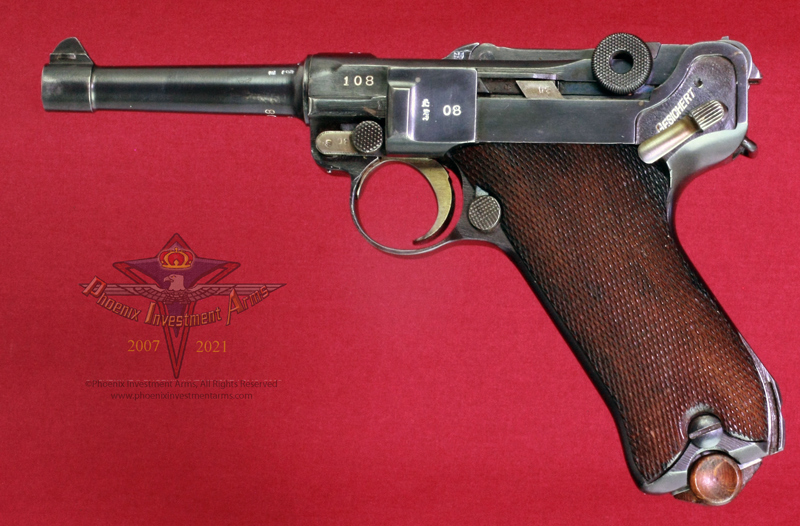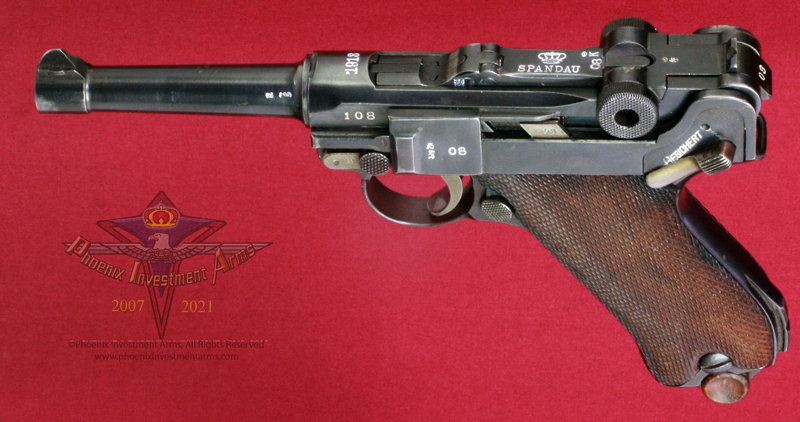|
|
|
This is a 1918 dated early Imperial Luger assembled by the Royal Arsenal at Spandau. The 1918 Chamber date is the year of production by Spandau, in this case at the very end of the war. This is a 9mm Parabellum with a 100mm barrel. Just like it came from the battlefield of WWI. (3009) |
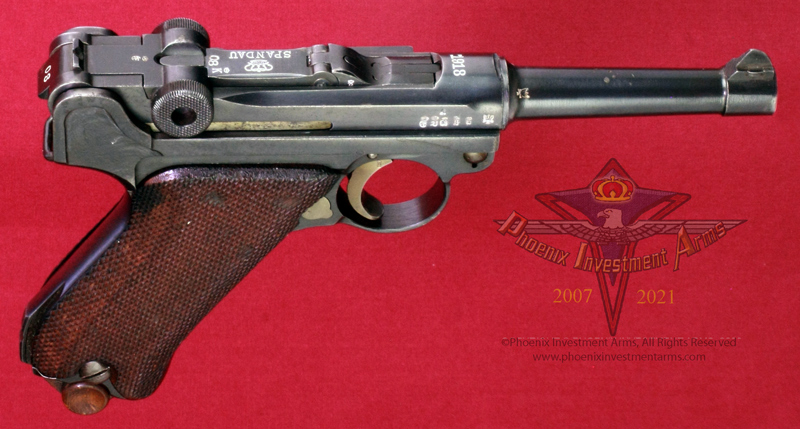 |
Serial number placement is in the
military ("exposed") style; displayed on the left side of the
receiver, the side plate, the locking bolt, the sear bar safety, the
extractor, the forward toggle link, the front of the frame, under the
barrel, and on the side of the trigger. This example has
all matching numbers. |
|
NOTE: Photographs taken today with the high mega-pixel camera show more than we sometimes can see with the human eye. Magnified close-ups show us tool marks and natural surface conditions that one normally doesn't see in the ordinary handling of the weapon. Photographs are copyrighted, all rights reserved, any extraction, reproduction or display of gun pictures without the express consent of the Phoenix Investment Arms is strictly prohibited. Thank you for your cooperation. |
